The Potez 452 was designed as a shipboard flying boat for observation on board cruisers and battleships of the Marine Nationale, in service from 1936 to 1944 in the Marine Nationale, notably to replace the loire-Gourdou Lesseure floaplanes of the 1920s. It saw service frontline until 1938-39 and was even developed as a single-seat fighter variant. However it was replaced by the Loire 130 before the war started, but continued operations until 1944.
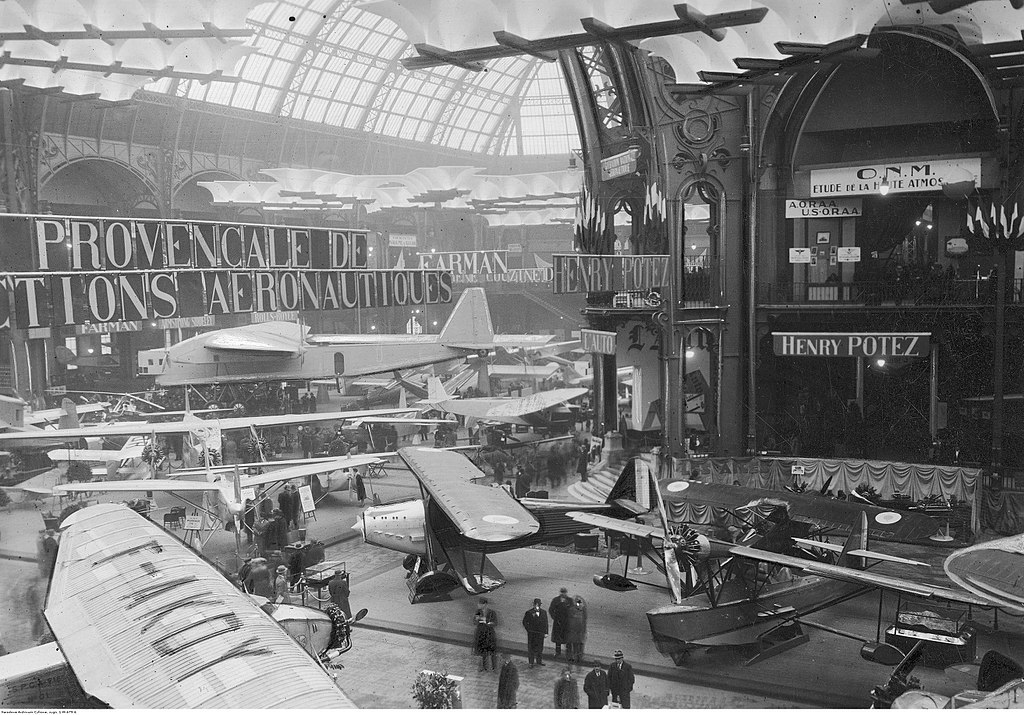
The Potez stand at the Paris Air Show 1932
During the First World War, Henry Potez and Marcel Bloch (future head of Dassault) started in the industry by founding the propeller "Éclair" (lightning) in 1915, that quickly rose to prominence and was installed of most French models. From 1916 the Société d'études aéronautiques (Aeronautical Studies Company) ordered 1,000 of them. Postwar war, Marcel Bloch sold his shares to Potez, who remained sole owner and he founded in 1919 Henry Potez Aeroplanes (Société des Avions Henry Potez) initially at Aubervilliers and then Levallois-Perret near Paris.
Then he moved to Méaulte in the Somme from 1925 in order to establish the "largest aeronautical factory in the world". The company met success in 1921 with the Potez XV, which the French Army ordered 400, then in 1924 over 3,600 Potez 25s and their derivatives, sold worldwide. Potez became, with his brand new and very modern facilities inspired by taylorism the major provider of aircraft for France and one of the world's largest aircraft manufacturer as stated. His offer soon branched out from observation/multirole aircraft to tourist and transport aircraft.
In 1923, Potez acquired Anzani, as its new engine division and associated with CAMS to offer Seaplanes, establishing a new factory for these as the "Seine Maritime Shipyards". In 1930, Potez Aircraft designed its fist seaplane following this association, the Potez 45 series, in response to a call for tenders issued by the French Navy for a two-seater reconnaissance aircraft. Potez purchased lands on the banks of the Étang de Berre from the bankrupt François Villiers Aviation Workshops o establish his own facilities to produce the model, so confident he was of an order.
In September 1930 still, Potez acquired the Chantiers aéro-maritimes de la Seine (CAMS), swept away by the collapse of "Société Générale Aéronautique" orllowing the 1929 financial crisis. CMAS had an excellent design office with recognized expertise in seaplanes, headed by Maurice Hurel as well as factories in Sartrouville and Berre-Vitrolle nearby the new facilities at Villiers, and a boilermaking workshop in Saint-Denis. CAMS became Potez-CAMS and retained its independent design office. Potez later started the development of tourist aviation and operated for these five service stations at Méaulte, Orly, Berre, Courbevoie, and Le Fayet, creating a network of service stations and repairs, benefiting from generous state incentives. We will stop there this venture into the company for another day. In essence, Potez was savaged during the war, its factories destroyed, personal dispersed, and broke in 1945. It survived by building engines postwar but the company died out in 1963.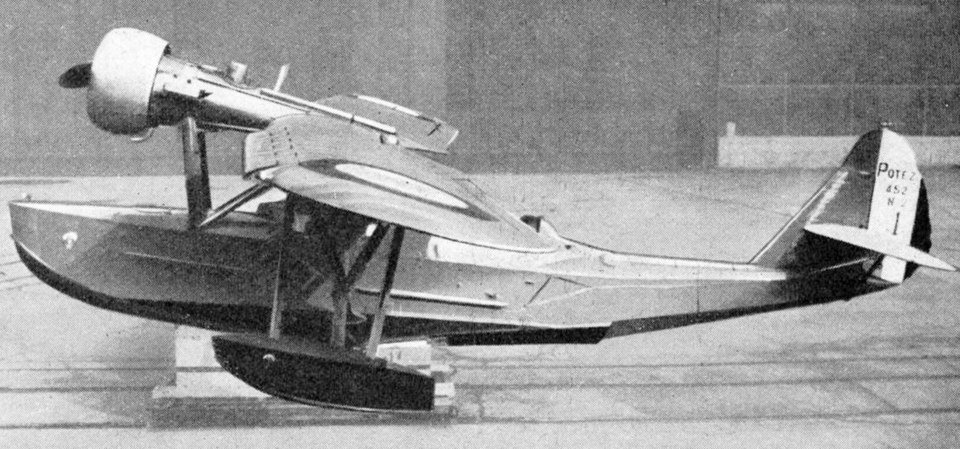
Potez 452 in "Le Potentiel Aérien Modial 1936"
In 1930, the French Navy issued a program for a two-seater observation seaplane catapulted from cruisers. It was mainly intended for the colonies, and thus needed to be dependable, rugged and easy to maintain as well as being light, and able to withstand all weather conditions to land at sea. It was to have folding wings to fit in a hangar as well. The top speed was setup at 140 km/h, maximum speed for takeoff 83 km/h. The program attracted attzntion from Étienne Romano, Marcel Besson, Pierre Levasseur and chief engineer Bodiansky, FBA under Louis Schreck, as well as Gourdou-Leseurre and CAMS.
Potez, which was about to acquire CAMS was also interested but the Méaulte design office lacked experience, only tweaking with floats on land-based aircraft such as the Potez 25, Potez 39, and others. Henry Potez approached François Villiers from a small seaplane manufacturer, whose bankrupt Berre factory he eventually bought in September 1931. But he found the necessary personnel by purchasing the Chantiers aéro-maritimes de la Seine (CAMS) in 1932. Without the long experience of this company since 1920 as a specialist of flying boats with a long list of short production models. In 1930 for example, CAMS unveiled the prototype torpedo bomber floatplane CAMS 52 which was promising.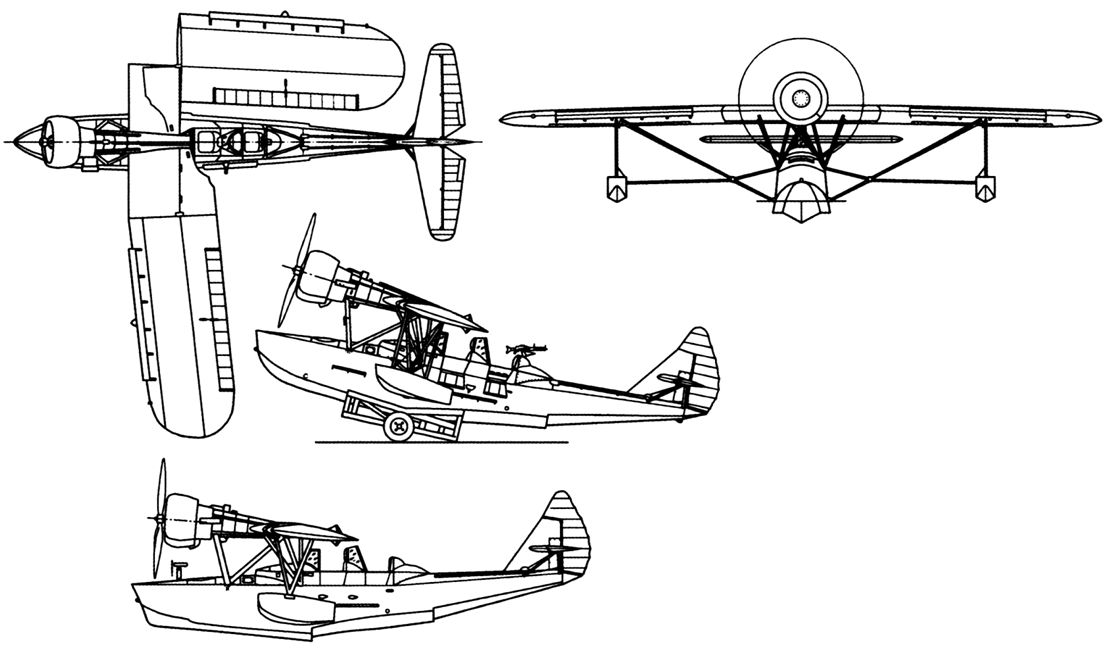
Without much experience with seaplanes, engineer Louis Coroller from Potez study office started working initially on a high-wing metal-built seaplane powered by a 230 hp Salmson 9Ab engine. This model carried out its first tests on the Seine at Argenteuil in March 1932. It was moved to Berre in Southern France in April to be tested by Lieutenant Henri Nomy and then sent to CEPA at Saint-Raphaël for official, state tests for the Marine Nationale. The prototype Potez 45 reached a top speed of 222 km/h and stalled at only 72 km/h thanks to leading edge slats and trailing edge with slotted flaps. The latter choice was the result of former naval officer Delaruelle's input. Meeting most of the navy's requirements presented no major technical difficulties and even reducing the flight speed to 83 km/h, issues were solved by installing a fixed slat.
Delaruelle developed the hull, and the slatted wing by a team of led by engineer Coroller. Incidentally, a similar slat performed exceptionally well on the Potez 36. But seakeeping remained poor with a forward position of the engine, whose thrust axis passed well above the seaplane's center of gravity. This created a strong nose-down torque, so the bow ploughed heavily into the waves to the point one official with sarcasm asked if Potez intended to provide instead a submarine. In addition, the engine was considered too weak and Potez lost this order to Gourdou-Leseurre and its GL-831, selected instead. However the easy maintenance on far flung basess of the Empire led to the extensive use of wood, an approach allowed for rapid repairs at virtually any airfield. Performances issues were solved by choosing the Salmson 9A engine rated for 230 ho.
In 1933, the prototype returned to the factory for modifications:
-A 350 hp Hispano-Suiza 9 Qd nine-cylinder radial engine was installed as well as a three-bladed propeller
-The airfoil was changed for a new wing with the same profile as that of the Potez 50
-A simplified structure was adopted for production.
-The hull was partially redesigned forward, raised, lengthened by a meter to improve buoyancy.
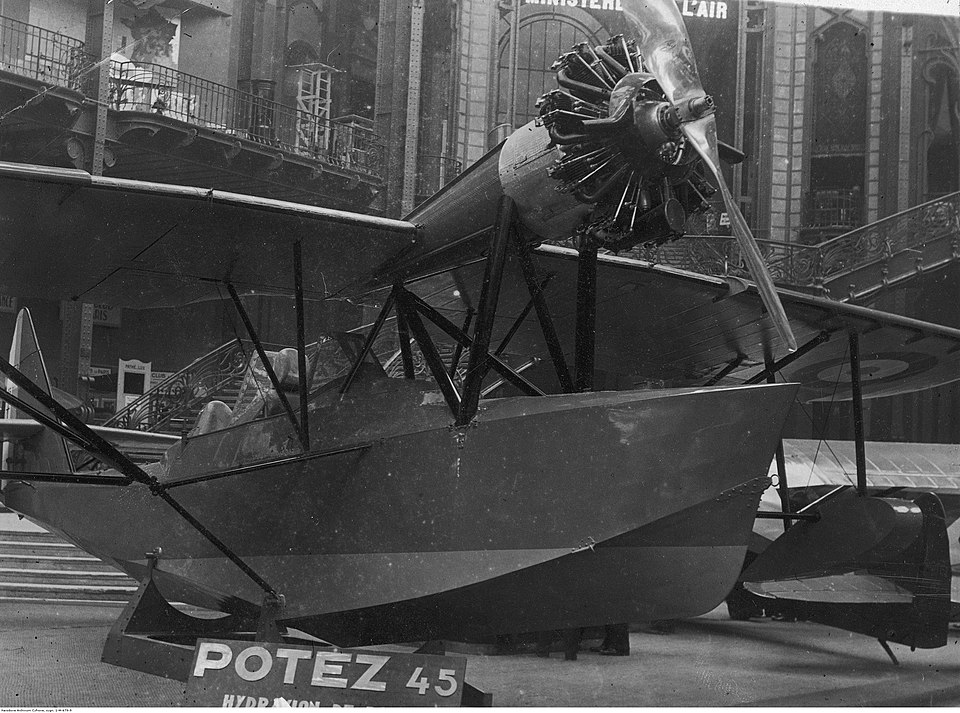
Potez 45 prototype at Paris Air Show 1932
After undergoing catapult launch tests from the seaplane carrier Commandant Teste in Brest, it clocked at 250 km/h at sea level, which was satisfactory to the French Navy, ordering ten 452 in 1935 and six additional that same year for a total of 17 (1 451, 16 452). Undr captain Nomy, these trials ensured several modifications such as the wing stabilizing floats moved further from the fuselage for greater stability when taxiing on water. Saint Raphael trials of September 5 were the start of the official flight tests and the pilot noted it performed excellently in the air, responded well to the controls, was stable, and the cockpit had good visibility at all stages of flight.
Takeoff issues were also solved, as the model had a hard time "unsticking" even in light sea conditions. When plowing, water would flood the open cockpits of the pilot and observer and the crew ended in the cold at higher altitude, wet from head to toe, and often fell ill, jockingly referring soon in the pilot's community the Potez 542 as the "sous-marin" ("submarine"). Thus, the prototype seaplane No. 01 in the factory had its bow lenghtened as seen above, but also rounded, lengthtened up to 10.03 meters, and its deadrise reduced. The lower wing was removed, going from a sesquiplane into a parasol as well as the shape and location of the float mounts from the tips of the lower wing to below the main wings and fuselage under wooden struts. The date of the first flight is debated still, either December 20 or October 17, 1935.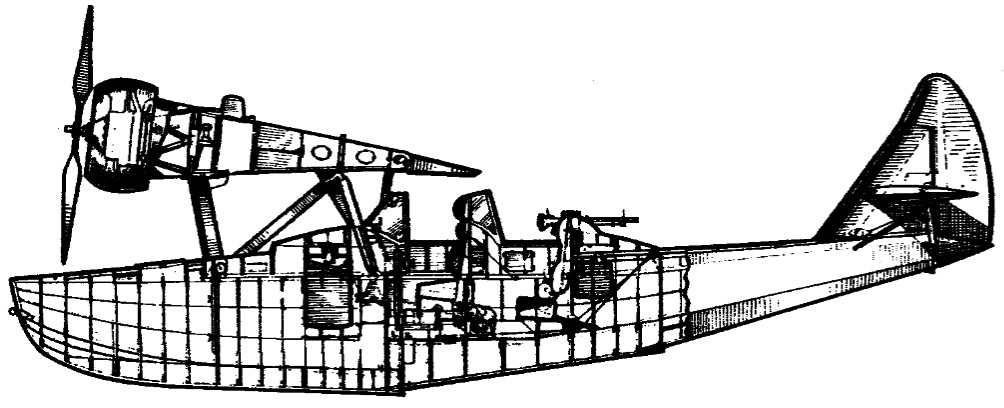
The French Navy so ordered ten 452 in 1935, six more in 1936, all built in the CAMS factory in Sartrouville. The first production model flew off the Seine on 20 December 1935. Pilot training was performed on the battleship Lorraine just being converted to operate such seaplanes, with the Potez 452 no. 2. This revealed some problems due to company's inexperience, like he hull covering made of magnesium panels, fixed to the duralumin structure by steel screws and rivets to save weight that tended t rust away and the panels were quickly corroded by an electrolytic phenomenon. The covering has to be replaced by others made of aluminium. Spain purchased a production license in February 1936, never used due to the outbreak of the civil war. One was also evaluated by the Imperial Japanese Navy in 1937.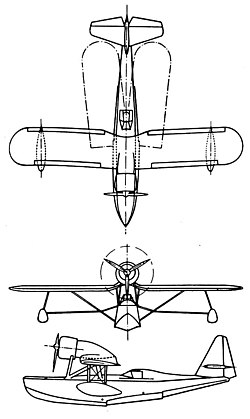 In 1934, the French Navy published a new specification for a single-seater seaplane as reconnaissance and fighter model to be operated by the Battleship Lorraine. Several tenders were examines with proposals such as the Bernard H.52, Loire 210 and Romano R.90. Potez on its sizde took the easy way and simply converted the Potez 452 into a single-seater, with enclosed canopy and fully protected 14-cyl. Hispano-Suiza double rown radial engine rated for 720 hp by the use of a mechanical compressor to maintain high speed at altitude, and a new three-bladed metal variable-pitch propeller. The prototype flew on September 24, 1935 and the Navy judged the performance interesting. But the model was only armed with two 7.5 mm machine guns in the nose, firing outside the propeller's arc, which was weak. But what turned it down was its very high nose-down torque just like the initial 452, a problem that was never solved. The Loire 210 was chosen instead.
In 1934, the French Navy published a new specification for a single-seater seaplane as reconnaissance and fighter model to be operated by the Battleship Lorraine. Several tenders were examines with proposals such as the Bernard H.52, Loire 210 and Romano R.90. Potez on its sizde took the easy way and simply converted the Potez 452 into a single-seater, with enclosed canopy and fully protected 14-cyl. Hispano-Suiza double rown radial engine rated for 720 hp by the use of a mechanical compressor to maintain high speed at altitude, and a new three-bladed metal variable-pitch propeller. The prototype flew on September 24, 1935 and the Navy judged the performance interesting. But the model was only armed with two 7.5 mm machine guns in the nose, firing outside the propeller's arc, which was weak. But what turned it down was its very high nose-down torque just like the initial 452, a problem that was never solved. The Loire 210 was chosen instead.
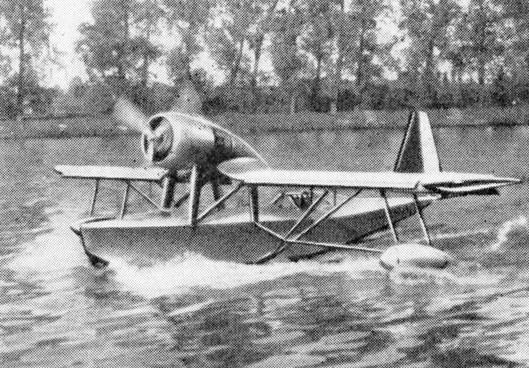
Potez 453 prototype on trials, L'Aéropile July 1936
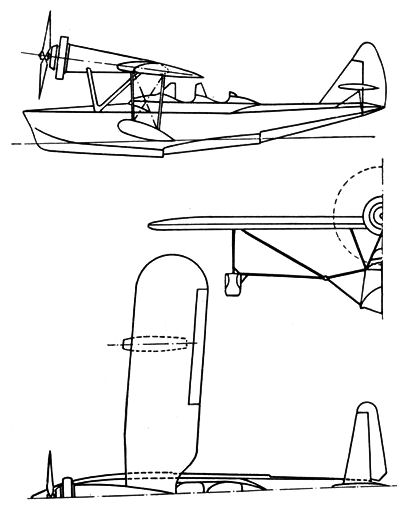 The struts of the supporting floats and wing struts were attached to the wing spars below and made of wood. Ailerons were mounted along the trailing edge of the wing, controlled by cables. The wing skin was plywood and the leading edge had reinforced skin covered with 3-mm plywood and percale doped with special water-repellent coating.
The tail assembly comprised spars and ribs with the stabilizer having a fixed angle of attack, mounted on the vertical stabilizer to protect it from spray in takeoff and landing. The stabilizer was connected to the boat's hull with struts for rigidity and both elevator and rudder had horn compensation, trim tabs, to be adjusted on the ground. All tail surfaces were covered with fabric with a water-repellent coating and lines were cable-operated.
The struts of the supporting floats and wing struts were attached to the wing spars below and made of wood. Ailerons were mounted along the trailing edge of the wing, controlled by cables. The wing skin was plywood and the leading edge had reinforced skin covered with 3-mm plywood and percale doped with special water-repellent coating.
The tail assembly comprised spars and ribs with the stabilizer having a fixed angle of attack, mounted on the vertical stabilizer to protect it from spray in takeoff and landing. The stabilizer was connected to the boat's hull with struts for rigidity and both elevator and rudder had horn compensation, trim tabs, to be adjusted on the ground. All tail surfaces were covered with fabric with a water-repellent coating and lines were cable-operated.
The hull fuselage had a two-tiered design with high deadrise to "unstick" and its structure was made of wood for easy repairs, with longitudinal spars and stringers, and transverse load-bearing frames. There were in all five main longitudinal load-bearing framesalso used as bulkheads into the lower hull. The boat's structure had also load-bearing watertight auxiliary frames below for extra rigidty when landing, with a central section supporting struts, braces, engine nacelle. The second divided the hull into six sealed compartments for high buoyancy. Even with one compartment completely flooded, the fuselage remained afloat. It was was sheathed in plywood covered with a waterproof fabric. After the first catapult trials, the Potez 45 had its rigging replaced, eliminating any swaying during ascent aboard the ship.
The engine mount was welded from steel tubing, attached to the forward main frame of the engine nacelle and to the boat hull with two reinforced N-shaped struts. The cowling was a quick-release NACA annular model for maintenance. It was controlled by rigid rods driven by the throttle located on the left cockpit side. Two fuel tanks were located in the fuselage, one in front of the pilot with starting pump. The additional one was behind the observer's cabin. It was fed to the engine carburetor using a motor pump, with a backup hand pump, its handle located in the cockpit. It was doubled by a Viet electric starter. The oil tank and oil system instruments were located behind the engine.
Performances were in conformity with the specs, with a minimal speed around 72 km/h without stalling to land, a maximum of 222 km/h at sea level. The Potez 452 climbed to an altitude of 5,000 meters in 28 minutes, hardly unterceptor performances. However this was the unladen tested speed. In actual combat fully loaded it was down to 217 km/h (135 mph, 117 kn) at 2,000 m (6,560 ft) bu its ideal cruise speed for range was around 100 kph. It could stay at this speed as tested, aloft for 5 hours and ten minutes. The final climb rate when operational (normally loaded) was 7 min 15 s to 2,000 m (6,560 ft) for a ceiling at 5,500 km in operations, albeit it was able to climb up to 6,000 m if needed, but unladen on trials mode.
By September 1939 eleven were listed (nos. 3 to 7 and 9, 11, 13, 14, 15 and 16), including four in Indochina. Using side by the side the Gourdou-Leseure 812 and the Potez 452 was an issue, notably because they used different catapult trolleys and replacement was time consuming. Catapult power had to be setup lower as well, complicating operations and increasing the chances of an error, so the use of mixed flight was discontinued. Eventually the Loire 130 became standard and from 1936, the Potez 452 mostly flew from shore bases.
There was no significant naval action in the Mediterranean and after the French capitulation in June 1940, they remained part of the Vichy France naval aviation park. They remained in service on ships stationed in Africa but Nos. 3 and 4 were destroyed on November 8, 1942 at Port-Lyautey during Operation Torch. Several also were lost with the scuttling of the French fleet at Toulon on November 27.
The remainder four Potez 452s were deployed in French Indochina for reconnaissance saw action in the 1940–1941 Franco-Thai War and played an important role in the battle og Koh Chang. They remained in service until 1944, before being retired. They were also the last operational from their unit based at Cát Lái in November 1940. The "Section d’Hydravion de la Marine" had three aircraft (No. 7/SHM-8). No. 14/SHM-7 and No. 16/SHM-6 were placed at the disposal of Lamotte-Picquet and the colonial avisos Amiral Chamer and Dumont d’Urville. After the Franco-Thai war the lack of spare parts, forced from the maintenance teams a great deal of ingenuity o keep these in conditions, which included rebuilding the hull with local wood in 1941. The SHM still had a single Potez 452 at Biên Hòa making its last flight on September 7, 1944 before being decommissioned.
The Potez 452 genesis
About Potez

The Potez stand at the Paris Air Show 1932
During the First World War, Henry Potez and Marcel Bloch (future head of Dassault) started in the industry by founding the propeller "Éclair" (lightning) in 1915, that quickly rose to prominence and was installed of most French models. From 1916 the Société d'études aéronautiques (Aeronautical Studies Company) ordered 1,000 of them. Postwar war, Marcel Bloch sold his shares to Potez, who remained sole owner and he founded in 1919 Henry Potez Aeroplanes (Société des Avions Henry Potez) initially at Aubervilliers and then Levallois-Perret near Paris.
Then he moved to Méaulte in the Somme from 1925 in order to establish the "largest aeronautical factory in the world". The company met success in 1921 with the Potez XV, which the French Army ordered 400, then in 1924 over 3,600 Potez 25s and their derivatives, sold worldwide. Potez became, with his brand new and very modern facilities inspired by taylorism the major provider of aircraft for France and one of the world's largest aircraft manufacturer as stated. His offer soon branched out from observation/multirole aircraft to tourist and transport aircraft.
In 1923, Potez acquired Anzani, as its new engine division and associated with CAMS to offer Seaplanes, establishing a new factory for these as the "Seine Maritime Shipyards". In 1930, Potez Aircraft designed its fist seaplane following this association, the Potez 45 series, in response to a call for tenders issued by the French Navy for a two-seater reconnaissance aircraft. Potez purchased lands on the banks of the Étang de Berre from the bankrupt François Villiers Aviation Workshops o establish his own facilities to produce the model, so confident he was of an order.
In September 1930 still, Potez acquired the Chantiers aéro-maritimes de la Seine (CAMS), swept away by the collapse of "Société Générale Aéronautique" orllowing the 1929 financial crisis. CMAS had an excellent design office with recognized expertise in seaplanes, headed by Maurice Hurel as well as factories in Sartrouville and Berre-Vitrolle nearby the new facilities at Villiers, and a boilermaking workshop in Saint-Denis. CAMS became Potez-CAMS and retained its independent design office. Potez later started the development of tourist aviation and operated for these five service stations at Méaulte, Orly, Berre, Courbevoie, and Le Fayet, creating a network of service stations and repairs, benefiting from generous state incentives. We will stop there this venture into the company for another day. In essence, Potez was savaged during the war, its factories destroyed, personal dispersed, and broke in 1945. It survived by building engines postwar but the company died out in 1963.
The Programme

Potez 452 in "Le Potentiel Aérien Modial 1936"
In 1930, the French Navy issued a program for a two-seater observation seaplane catapulted from cruisers. It was mainly intended for the colonies, and thus needed to be dependable, rugged and easy to maintain as well as being light, and able to withstand all weather conditions to land at sea. It was to have folding wings to fit in a hangar as well. The top speed was setup at 140 km/h, maximum speed for takeoff 83 km/h. The program attracted attzntion from Étienne Romano, Marcel Besson, Pierre Levasseur and chief engineer Bodiansky, FBA under Louis Schreck, as well as Gourdou-Leseurre and CAMS.
Potez, which was about to acquire CAMS was also interested but the Méaulte design office lacked experience, only tweaking with floats on land-based aircraft such as the Potez 25, Potez 39, and others. Henry Potez approached François Villiers from a small seaplane manufacturer, whose bankrupt Berre factory he eventually bought in September 1931. But he found the necessary personnel by purchasing the Chantiers aéro-maritimes de la Seine (CAMS) in 1932. Without the long experience of this company since 1920 as a specialist of flying boats with a long list of short production models. In 1930 for example, CAMS unveiled the prototype torpedo bomber floatplane CAMS 52 which was promising.
Development of the 45 series

Without much experience with seaplanes, engineer Louis Coroller from Potez study office started working initially on a high-wing metal-built seaplane powered by a 230 hp Salmson 9Ab engine. This model carried out its first tests on the Seine at Argenteuil in March 1932. It was moved to Berre in Southern France in April to be tested by Lieutenant Henri Nomy and then sent to CEPA at Saint-Raphaël for official, state tests for the Marine Nationale. The prototype Potez 45 reached a top speed of 222 km/h and stalled at only 72 km/h thanks to leading edge slats and trailing edge with slotted flaps. The latter choice was the result of former naval officer Delaruelle's input. Meeting most of the navy's requirements presented no major technical difficulties and even reducing the flight speed to 83 km/h, issues were solved by installing a fixed slat.
Delaruelle developed the hull, and the slatted wing by a team of led by engineer Coroller. Incidentally, a similar slat performed exceptionally well on the Potez 36. But seakeeping remained poor with a forward position of the engine, whose thrust axis passed well above the seaplane's center of gravity. This created a strong nose-down torque, so the bow ploughed heavily into the waves to the point one official with sarcasm asked if Potez intended to provide instead a submarine. In addition, the engine was considered too weak and Potez lost this order to Gourdou-Leseurre and its GL-831, selected instead. However the easy maintenance on far flung basess of the Empire led to the extensive use of wood, an approach allowed for rapid repairs at virtually any airfield. Performances issues were solved by choosing the Salmson 9A engine rated for 230 ho.
In 1933, the prototype returned to the factory for modifications:
-A 350 hp Hispano-Suiza 9 Qd nine-cylinder radial engine was installed as well as a three-bladed propeller
-The airfoil was changed for a new wing with the same profile as that of the Potez 50
-A simplified structure was adopted for production.
-The hull was partially redesigned forward, raised, lengthened by a meter to improve buoyancy.

Potez 45 prototype at Paris Air Show 1932
After undergoing catapult launch tests from the seaplane carrier Commandant Teste in Brest, it clocked at 250 km/h at sea level, which was satisfactory to the French Navy, ordering ten 452 in 1935 and six additional that same year for a total of 17 (1 451, 16 452). Undr captain Nomy, these trials ensured several modifications such as the wing stabilizing floats moved further from the fuselage for greater stability when taxiing on water. Saint Raphael trials of September 5 were the start of the official flight tests and the pilot noted it performed excellently in the air, responded well to the controls, was stable, and the cockpit had good visibility at all stages of flight.
Takeoff issues were also solved, as the model had a hard time "unsticking" even in light sea conditions. When plowing, water would flood the open cockpits of the pilot and observer and the crew ended in the cold at higher altitude, wet from head to toe, and often fell ill, jockingly referring soon in the pilot's community the Potez 542 as the "sous-marin" ("submarine"). Thus, the prototype seaplane No. 01 in the factory had its bow lenghtened as seen above, but also rounded, lengthtened up to 10.03 meters, and its deadrise reduced. The lower wing was removed, going from a sesquiplane into a parasol as well as the shape and location of the float mounts from the tips of the lower wing to below the main wings and fuselage under wooden struts. The date of the first flight is debated still, either December 20 or October 17, 1935.
Potez 452

The French Navy so ordered ten 452 in 1935, six more in 1936, all built in the CAMS factory in Sartrouville. The first production model flew off the Seine on 20 December 1935. Pilot training was performed on the battleship Lorraine just being converted to operate such seaplanes, with the Potez 452 no. 2. This revealed some problems due to company's inexperience, like he hull covering made of magnesium panels, fixed to the duralumin structure by steel screws and rivets to save weight that tended t rust away and the panels were quickly corroded by an electrolytic phenomenon. The covering has to be replaced by others made of aluminium. Spain purchased a production license in February 1936, never used due to the outbreak of the civil war. One was also evaluated by the Imperial Japanese Navy in 1937.
Potez 453
 In 1934, the French Navy published a new specification for a single-seater seaplane as reconnaissance and fighter model to be operated by the Battleship Lorraine. Several tenders were examines with proposals such as the Bernard H.52, Loire 210 and Romano R.90. Potez on its sizde took the easy way and simply converted the Potez 452 into a single-seater, with enclosed canopy and fully protected 14-cyl. Hispano-Suiza double rown radial engine rated for 720 hp by the use of a mechanical compressor to maintain high speed at altitude, and a new three-bladed metal variable-pitch propeller. The prototype flew on September 24, 1935 and the Navy judged the performance interesting. But the model was only armed with two 7.5 mm machine guns in the nose, firing outside the propeller's arc, which was weak. But what turned it down was its very high nose-down torque just like the initial 452, a problem that was never solved. The Loire 210 was chosen instead.
In 1934, the French Navy published a new specification for a single-seater seaplane as reconnaissance and fighter model to be operated by the Battleship Lorraine. Several tenders were examines with proposals such as the Bernard H.52, Loire 210 and Romano R.90. Potez on its sizde took the easy way and simply converted the Potez 452 into a single-seater, with enclosed canopy and fully protected 14-cyl. Hispano-Suiza double rown radial engine rated for 720 hp by the use of a mechanical compressor to maintain high speed at altitude, and a new three-bladed metal variable-pitch propeller. The prototype flew on September 24, 1935 and the Navy judged the performance interesting. But the model was only armed with two 7.5 mm machine guns in the nose, firing outside the propeller's arc, which was weak. But what turned it down was its very high nose-down torque just like the initial 452, a problem that was never solved. The Loire 210 was chosen instead.

Potez 453 prototype on trials, L'Aéropile July 1936
Design
The Potez 452 was a two-seat, single-engine, catapult-propelled flying boat of mixed design, and in a parasol configuration. The wing had a center section linked to the fuselage and two folding outer wings. The latter were attached to the center section at an angle of 7 degrees relative to the horizontal for better stability. Each wing section had a slotted slat with fixed airflow channel, providing stability at low flight speeds, and increased aileron efficiency. The spindle-shaped engine cowling was attached to the fuselage by reinforced wooden struts. All wing sections were constructed using a two-spar design, with box-type wooden spars and a transverse wing structure made of wooden truss ribs. The wing spars were braced together with cable braces and when in storage, the wing panels were folded rearward and the rear sections of the center section folded upward. The struts of the supporting floats and wing struts were attached to the wing spars below and made of wood. Ailerons were mounted along the trailing edge of the wing, controlled by cables. The wing skin was plywood and the leading edge had reinforced skin covered with 3-mm plywood and percale doped with special water-repellent coating.
The tail assembly comprised spars and ribs with the stabilizer having a fixed angle of attack, mounted on the vertical stabilizer to protect it from spray in takeoff and landing. The stabilizer was connected to the boat's hull with struts for rigidity and both elevator and rudder had horn compensation, trim tabs, to be adjusted on the ground. All tail surfaces were covered with fabric with a water-repellent coating and lines were cable-operated.
The struts of the supporting floats and wing struts were attached to the wing spars below and made of wood. Ailerons were mounted along the trailing edge of the wing, controlled by cables. The wing skin was plywood and the leading edge had reinforced skin covered with 3-mm plywood and percale doped with special water-repellent coating.
The tail assembly comprised spars and ribs with the stabilizer having a fixed angle of attack, mounted on the vertical stabilizer to protect it from spray in takeoff and landing. The stabilizer was connected to the boat's hull with struts for rigidity and both elevator and rudder had horn compensation, trim tabs, to be adjusted on the ground. All tail surfaces were covered with fabric with a water-repellent coating and lines were cable-operated.
The hull fuselage had a two-tiered design with high deadrise to "unstick" and its structure was made of wood for easy repairs, with longitudinal spars and stringers, and transverse load-bearing frames. There were in all five main longitudinal load-bearing framesalso used as bulkheads into the lower hull. The boat's structure had also load-bearing watertight auxiliary frames below for extra rigidty when landing, with a central section supporting struts, braces, engine nacelle. The second divided the hull into six sealed compartments for high buoyancy. Even with one compartment completely flooded, the fuselage remained afloat. It was was sheathed in plywood covered with a waterproof fabric. After the first catapult trials, the Potez 45 had its rigging replaced, eliminating any swaying during ascent aboard the ship.
Engine and Performances
Above the fuselage and well in front of the cockpits was located the Hispano-Suiza 9Q air-cooled radial engine rated for 350 horsepower, built in France under license from the Wright Company. To improve aerodynamics, it was enclosed in a duralumin NACA cowling. The first Potez 45 prototype with the Salmson 9A engine also had a metal constant-pitch propeller from Levasseur, licensed from Reed whereas the production models with the Hispano-Suiza 9Q had a a two-bladed metal propeller from Chauviere.The engine mount was welded from steel tubing, attached to the forward main frame of the engine nacelle and to the boat hull with two reinforced N-shaped struts. The cowling was a quick-release NACA annular model for maintenance. It was controlled by rigid rods driven by the throttle located on the left cockpit side. Two fuel tanks were located in the fuselage, one in front of the pilot with starting pump. The additional one was behind the observer's cabin. It was fed to the engine carburetor using a motor pump, with a backup hand pump, its handle located in the cockpit. It was doubled by a Viet electric starter. The oil tank and oil system instruments were located behind the engine.
Performances were in conformity with the specs, with a minimal speed around 72 km/h without stalling to land, a maximum of 222 km/h at sea level. The Potez 452 climbed to an altitude of 5,000 meters in 28 minutes, hardly unterceptor performances. However this was the unladen tested speed. In actual combat fully loaded it was down to 217 km/h (135 mph, 117 kn) at 2,000 m (6,560 ft) bu its ideal cruise speed for range was around 100 kph. It could stay at this speed as tested, aloft for 5 hours and ten minutes. The final climb rate when operational (normally loaded) was 7 min 15 s to 2,000 m (6,560 ft) for a ceiling at 5,500 km in operations, albeit it was able to climb up to 6,000 m if needed, but unladen on trials mode.
Crew and Armament, Equipment
The Potez 452 carried two men, the pilot and observer seated one after the others in separate open cockpits with partial windshields. Both seats were at the same level and both had their own neck guard with soft headrests for high G loads in catapult launches. There were steel anti-coupling bars installed along the trailing edges of both cockpits. The seats also meet ejection-launch requirements and are upholstered. The main fuel tank was located in front of the pilot, whereas the engine projected almost to the nose. The initial armament was a twin 7.7mm Lewis machine guns in a rear flexible mount, but these were replaced with modern, faster-firing 7.5mm Darne machine guns. HD Cutaway. The Potez 452 carried no bombs. Other equipments for the observer included a wireless radio plus a small work table and clipboard with flight charts. The observer also manage the Darne with eight spare cheesebox still ammunition magazines stored in a special bag on the starboard side. The observe would also active a camera with 200 exposures film exposures mounted on a special bracket. For easy access to the cabin there was a folding down left panel on both positions and extended step.Variants
Potez 450
Prototype flying-boat with a 170 kW (230 hp) Salmson 9Ab engine: One builtPotez 452
Production 260 kW (350 hp) Hispano-Suiza 9Qd engine, 16 made.Potez 453
Floatplane fighter with 540 kW (720 hp) Hispano-Suiza 14Hbs, prototype flown on 24 September 1935.⚙ Potez 452 specs. | |
| Empty Weight | 1,102 kg (2,429 lb) |
| Gross Weight | 1,701 kg (3,751 lb) (catapult launch) 1,750 kg (3,858 lb) max TO |
| Lenght | 10.230 m (33 ft 6+3⁄4 in) |
| Wingspan | 12.995 m (42 ft 7+5⁄8 in) |
| Height | 3.400 m (11 ft 1+7⁄8 in) |
| Wing Area | 24.30 m2 (261.6 sq ft) |
| Engine | Hispano-Suiza 9 Qd, 9 cyl. AC radial 350 ch (260 kW) |
| Top Speed | 217 km/h (135 mph, 117 kn) at 2,000 m (6,560 ft) |
| Cruise Speed | c100 kph |
| Range | 5 hr 10 min |
| Climb rate | 7 min 15 s to 2,000 m (6,560 ft) |
| Ceiling | 5,500 m (18,040 ft) |
| Armament | 7.5 mm (0.295 inch) flex. rear cockpit |
| Crew | |
Operational History
The Potez 452 was first tested on Commandant Teste and the battleship Lorraine but not adopted. Instead it was trhought to be deloyed at various colonial ouposts as initially intended, but half were based at Toulon for reconnaissance, still in 1939. In 1936 they started operating alongside the Gourdou 832s on the 2nd class cruiser Lamotte-Picquet and the new light cruisers of the La Galissonière class and even colonial avisos such as Amiral Charner (PG-81), Bougainville (PG-76), D’Entrecasteaux (PG-79), D’Iberville (PG-82), Dumont d’Urville (PG-77) and La Grandière (A-60) all provided with a catapult. Some aircraft were lost in accidents like no. 12 on March 1, 1937, no. 10 on March 1, 1938, no. 2 on May 1, 1938.By September 1939 eleven were listed (nos. 3 to 7 and 9, 11, 13, 14, 15 and 16), including four in Indochina. Using side by the side the Gourdou-Leseure 812 and the Potez 452 was an issue, notably because they used different catapult trolleys and replacement was time consuming. Catapult power had to be setup lower as well, complicating operations and increasing the chances of an error, so the use of mixed flight was discontinued. Eventually the Loire 130 became standard and from 1936, the Potez 452 mostly flew from shore bases.
There was no significant naval action in the Mediterranean and after the French capitulation in June 1940, they remained part of the Vichy France naval aviation park. They remained in service on ships stationed in Africa but Nos. 3 and 4 were destroyed on November 8, 1942 at Port-Lyautey during Operation Torch. Several also were lost with the scuttling of the French fleet at Toulon on November 27.
The remainder four Potez 452s were deployed in French Indochina for reconnaissance saw action in the 1940–1941 Franco-Thai War and played an important role in the battle og Koh Chang. They remained in service until 1944, before being retired. They were also the last operational from their unit based at Cát Lái in November 1940. The "Section d’Hydravion de la Marine" had three aircraft (No. 7/SHM-8). No. 14/SHM-7 and No. 16/SHM-6 were placed at the disposal of Lamotte-Picquet and the colonial avisos Amiral Chamer and Dumont d’Urville. After the Franco-Thai war the lack of spare parts, forced from the maintenance teams a great deal of ingenuity o keep these in conditions, which included rebuilding the hull with local wood in 1941. The SHM still had a single Potez 452 at Biên Hòa making its last flight on September 7, 1944 before being decommissioned.
Gallery
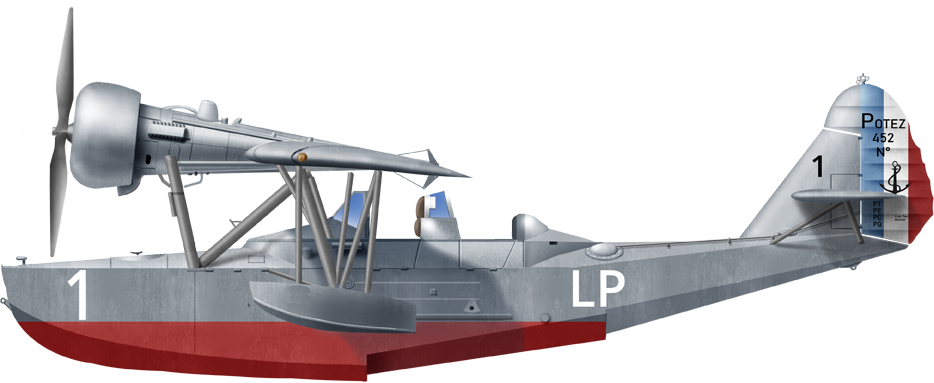
Model N°1, catapult tests on the cruiser Lamotte Picquet 1934
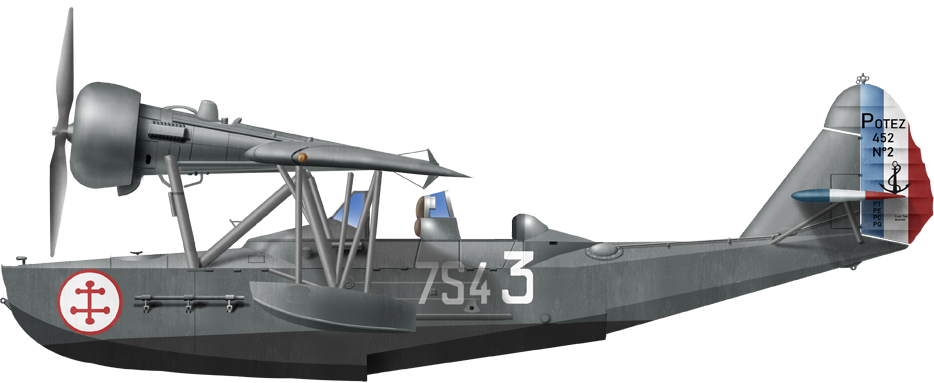
Potez 452 tested on the Battleship Lorraine 1936-39
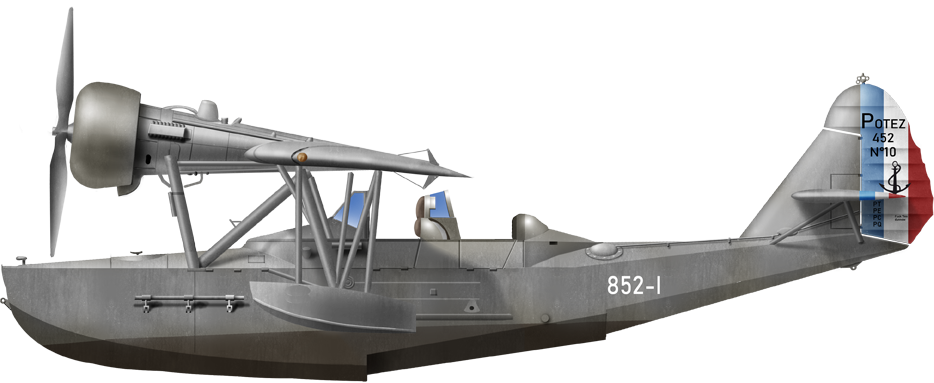
On the aviso Bougainville, Pacific 1939
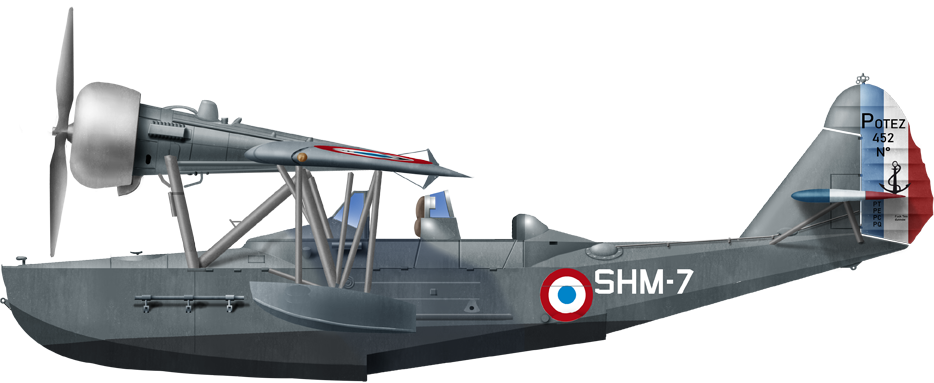
SMH2, Battle of Kho Chang 1941
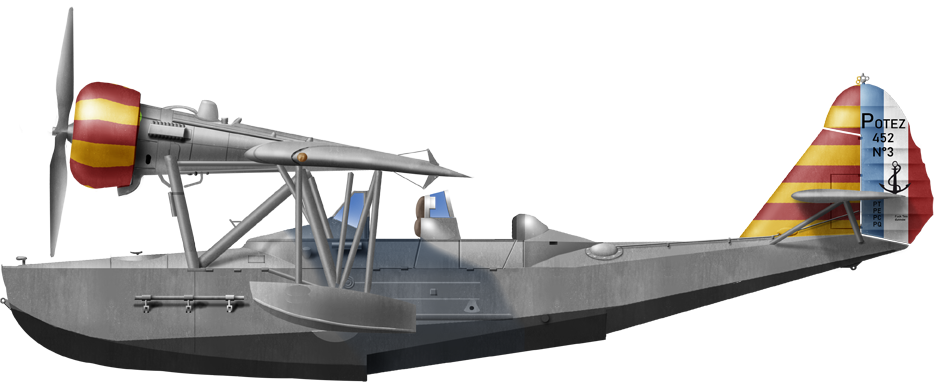
Potez 452 in Vichy service North Africa 1942



Potez 453 being tested July 1936, published in L'Aéropile

Prototype in 1933

Production 452 N°1 on its cradle

HS7-5 being lifted up on its mothership

452 N°2

Model from SHM-8 being lifted up, engine running (invisible cable)

N°15(?) maintained under a ship's spar

Artist rendition of SHM-7, franco-thai war 1941
Read More
Aéronautique navale de chez nous, de Pierre Gaillard (Gallimard, 1995)Green & Swanborough
Vice-Amiral Roger Vercken, Histoire succincte de l'aéronautique navale, Armées, ARDHAN, 1993, 173 p. William Green & Gordon Swanborough, Le grand livre des chasseurs p.481/482. Celiv, Paris (1997)
Collectif, Les Ailes françaises 1939-1945 vol 5 et 6. Éditions TMA, Paris
Links
hydroretro.netpassionair1940.fr
aviafrance.com
airpages.ru
passionair1940.fr
avionslegendaires.net
war-book.ru
airwar.ru
fr.wikipedia.org
cyberaerobreton.fr
Model Kits
On scalemates- Lohner E (1913)
- Macchi M3 (1916)
- Macchi M5 (1918)
- Ansaldo ISVA (1918)
- Sopwith Baby (1916)
- Short 184 (1916)
- Fairey Campania (1917)
- Sopwith Cuckoo (1917)
- Felixstowe F.2 (1917)
- Friedrichshafen FF 33 (1916)
- Albatros W4 (1916)
- Albatros W8 (1918)
- Hanriot HD.2
- Grigorovitch M5
- IJN Farman MF.7
- IJN Yokosho Type Mo
- Yokosho Rogou Kougata (1917)
- Yokosuka Igo-Ko (1920)
- Curtiss N9 (1916)
- Aeromarine 39
- Vought VE-7
- Douglas DT (1921)
- Boeing FB.5 (1923)
- Boeing F4B (1928)
- Vought O2U/O3U Corsair (1928)
- Blackburn Blackburn (1922)
- Supermarine Seagull (1922)
- Blackburn Ripon (1926)
- Fairey IIIF (1927)
- Fairey Seal (1930)
- LGL-32 C.1 (1927)
- Caspar U1 (1921)
- Dornier Do J Wal (1922)
- Rohrbach R-III (1924)
- Mitsubishi 1MF (1923)
- Mitsubishi B1M (1923)
- Yokosuka E1Y (1923)
- Nakajima A1N (1927)
- Nakajima E2N (1927)
- Mitsubishi B2M (1927)
- Nakajima A4N (1929)
- CANT 18
WW1
✠ K.u.K. Seefliegerkorps:
 Italian Naval Aviation
Italian Naval Aviation
 RNAS
RNAS
 Marineflieger
Marineflieger
 French Naval Aviation
French Naval Aviation
 Russian Naval Aviation
Russian Naval Aviation
 IJN Air Service
IJN Air Service
 USA
USA
Interwar
 Interwar US
Interwar US
 Interwar Britain
Interwar Britain
 Interwar France
Interwar France
 Interwar Germany
Interwar Germany
 Interwar Japan
Interwar Japan
 Interwar Italy
Interwar Italy
- Curtiss SOC seagull (1934)
- Grumman FF (1931)
- Curtiss F11C Goshawk (1932)
- Grumman F2F (1933)
- Grumman F3F (1935)
- Northrop BT-1 (1935)
- Grumman J2F Duck (1936)
- Consolidated PBY Catalina (1935)
- Brewster/NAF SBN-1 (1936)
- Curtiss SBC Helldiver (1936)
- Vought SB2U Vindicator (1936)
- Brewster F2A Buffalo (1937)
- Douglas TBD Devastator (1937)
- Vought Kingfisher (1938)
- Curtiss SO3C Seamew (1939)
- Douglas SBD Dauntless (1939)
- Grumman F4F Wildcat (1940)
- F4U Corsair (NE) (1940)
- Brewster SB2A Buccaneer (1941)
- Grumman TBF/TBM Avenger (1941)
- Consolidated TBY Sea Wolf (1941)
- Grumman F6F Hellcat (1942)
- Curtiss SB2C Helldiver (1942)
- Curtiss SC Seahawk (1944)
- Grumman F8F Bearcat (1944)
- Ryan FR-1 Fireball (1944)
- Douglas AD-1 Skyraider (1945)
Fleet Air Arm
- Fairey Swordfish (1934)
- Blackburn Shark (1934)
- Supermarine Walrus (1936)
- Fairey Seafox (1936)
- Blackburn Skua (1937)
- Short Sunderland (1937)
- Blackburn Roc (1938)
- Fairey Albacore (1940)
- Fairey Fulmar (1940)
- Grumman Martlet (1941)
- Hawker sea Hurricane (1941)
- Brewster Bermuda (1942)
- Fairey Barracuda (1943)
- Fairey Firefly (1943)
- Grumman Tarpon (1943)
- Grumman Gannet (1943)
- Supermarine seafire (1943)
- Blackburn Firebrand (1944)
- Hawker Sea Fury (1944)
IJN aviation
- Aichi D1A "Susie" (1934)
- Mitsubishi A5M "Claude" (1935)
- Nakajima A4N (1935)
- Yokosuka B4Y "Jean" (1935)
- Mitsubishi G3M "Nell" (1935)
- Nakajima E8N "Dave" (1935)
- Kawanishi E7K "Alf" (1935)
- Nakajima B5N "Kate" (1937)
- Kawanishi H6K "Mavis" (1938)
- Aichi D3A "Val" (1940)
- Mitsubishi A6M "zeke" (1940)
- Nakajima E14Y "Glen" (1941)
- Nakajima B6N "Jill" (1941)
- Mitsubishi F1M "pete" (1941)
- Aichi E13A Reisu "Jake" (1941)
- Kawanishi E15K Shiun "Norm" (1941)
- Nakajima C6N Saiun "Myrt" (1942)
- Yokosuka D4Y "Judy" (1942)
- Kyushu Q1W Tokai "Lorna" (1944)
Luftwaffe
- Arado 196 (1937)
- Me109 T (1938)
- Blohm & Voss 138 Seedrache (1940)
Italian Aviation
- Savoia-Marchetti S.55
- IMAM Ro.43/44
- CANT Z.501 Gabbiano
- CANT Z.506 Airone
- CANT Z.508
- CANT Z.511
French Aeronavale
- GL.300 (1926-39)
- Levasseur PL.5 (1927)
- Potez 452 (1935)
- Loire 210 (1936)
- Loire 130 (1937)
- LN 401 (1938)
Soviet Naval Aviation
- Shavrov SH-2 (1928)
- Tupolev TB-1P (1931)
- Beriev MBR-2 (1930)
- Tupolev MR-6 (1933)
- Tupolev MTB-1 (1934)
- Beriev Be-2 (1936)
- Polikarpov I16 naval (1936)
- Tupolev MTB-2 (1937)
- Ilyushine DB-3T/TP (1937)
- Beriev Be-4 (1940)
-
Skoda Š-328V
R-XIII Idro
Fokker C.XI W (1934)
WW2
- De Havilland Sea Vixen
- Hawker Sea Hawk
- Supermarine Scimitar
- Blackburn Buccaneer
- Hawker Sea Harrier
- Douglas A4 Skyhawk
- Grumman F9F Panther
- Vought F8 Crusader
- McDonnell-Douglas F-4 Phantom-II
- North Am. A5 Vigilante
- TU-142
- Yak 38 forger
☢ Cold War
✧ NATO
 Fleet Air Arm
Fleet Air Arm
 US Navy
US Navy
☭ Warsaw Pact
Merch

Seafire Mark 45; HMS Pretoria Castle
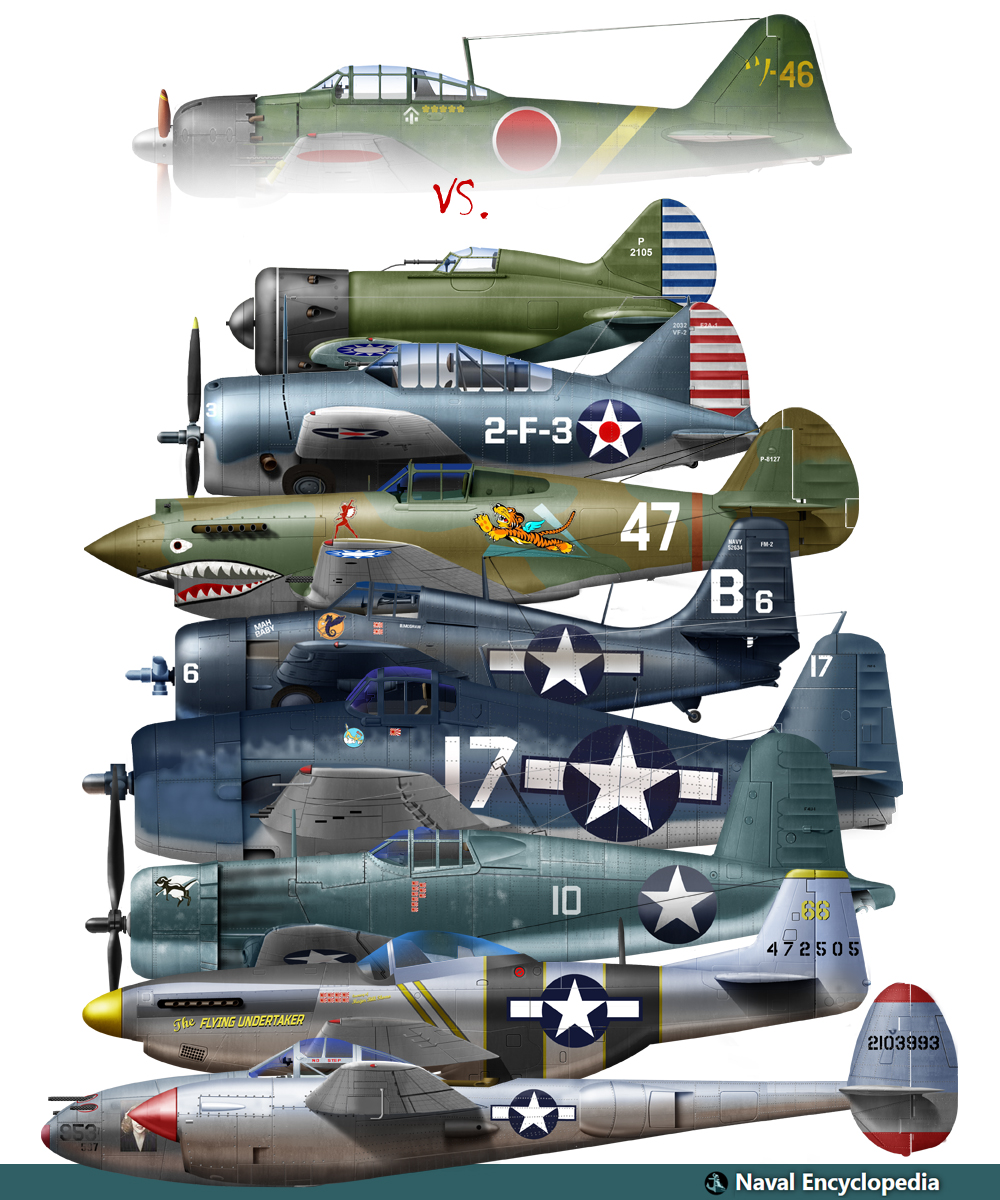
Zeros vs its aversaries
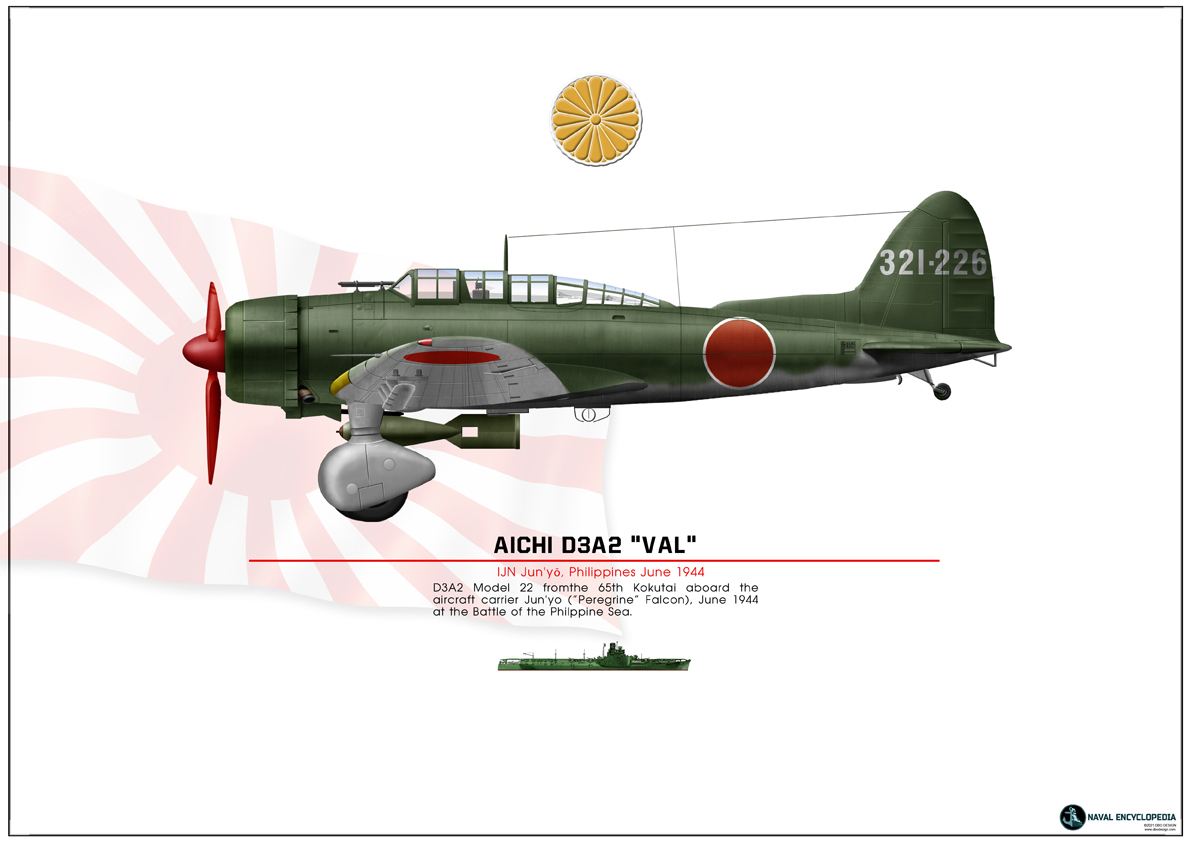
Aichi D3A “Val” Junyo
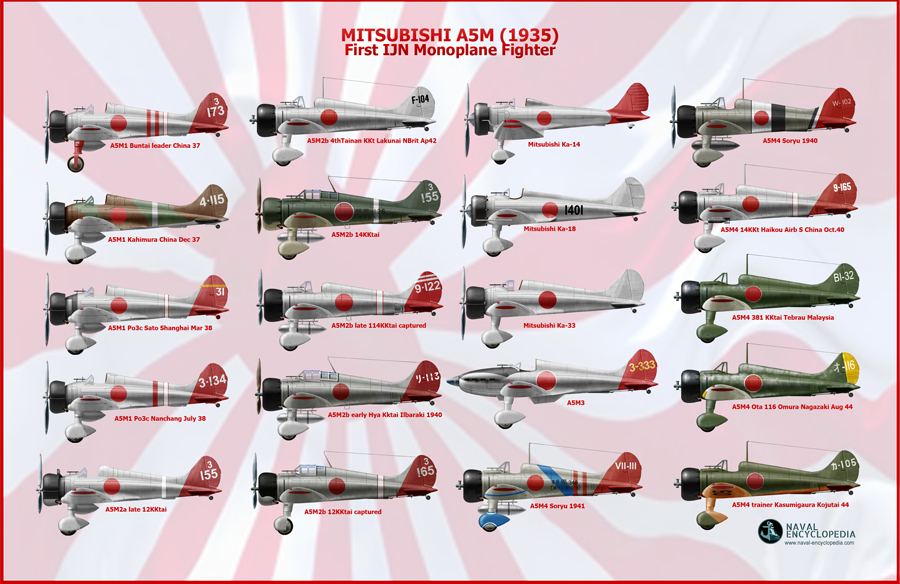
Mitsubishi A5M poster
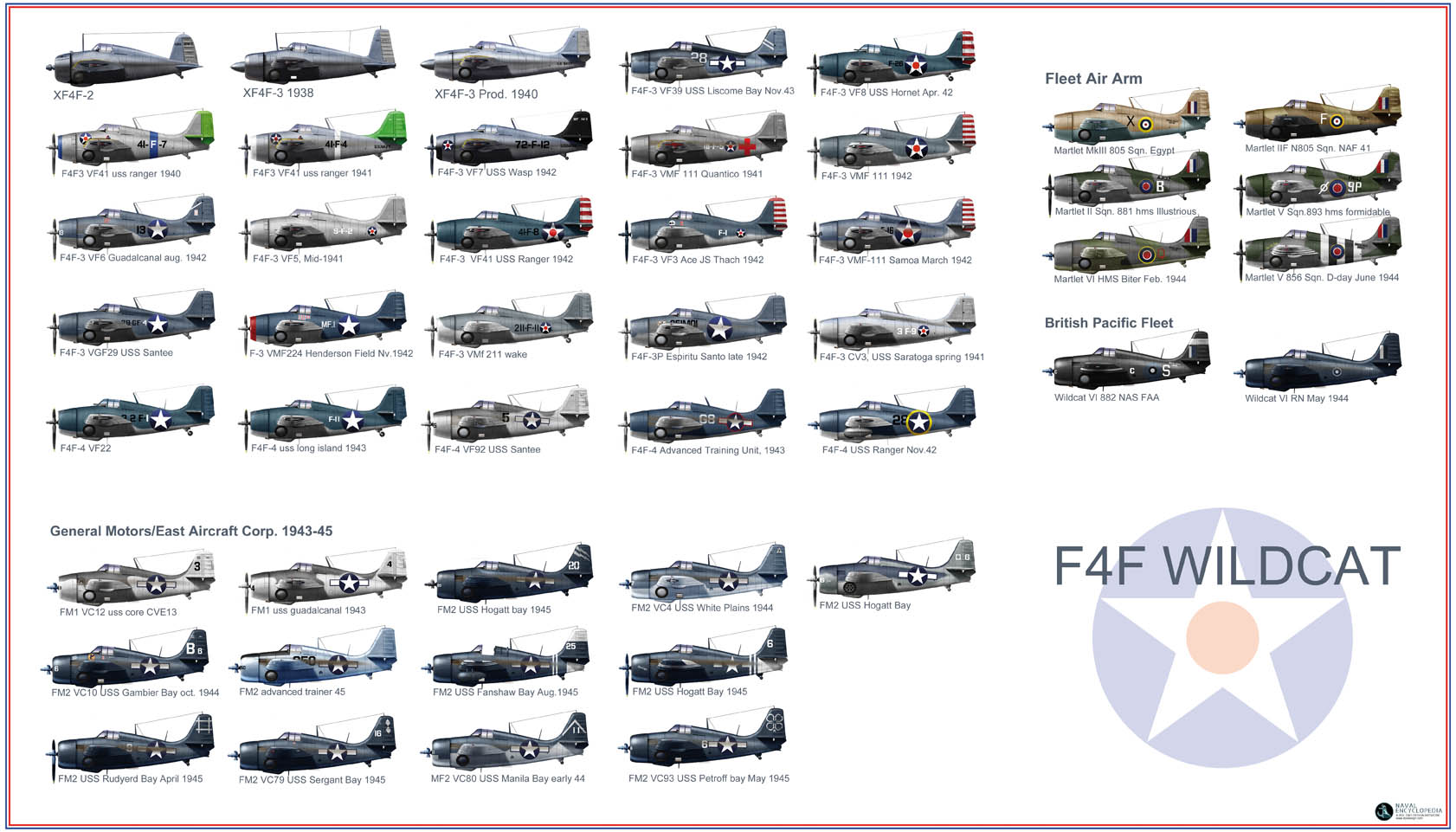
F4F wildcat
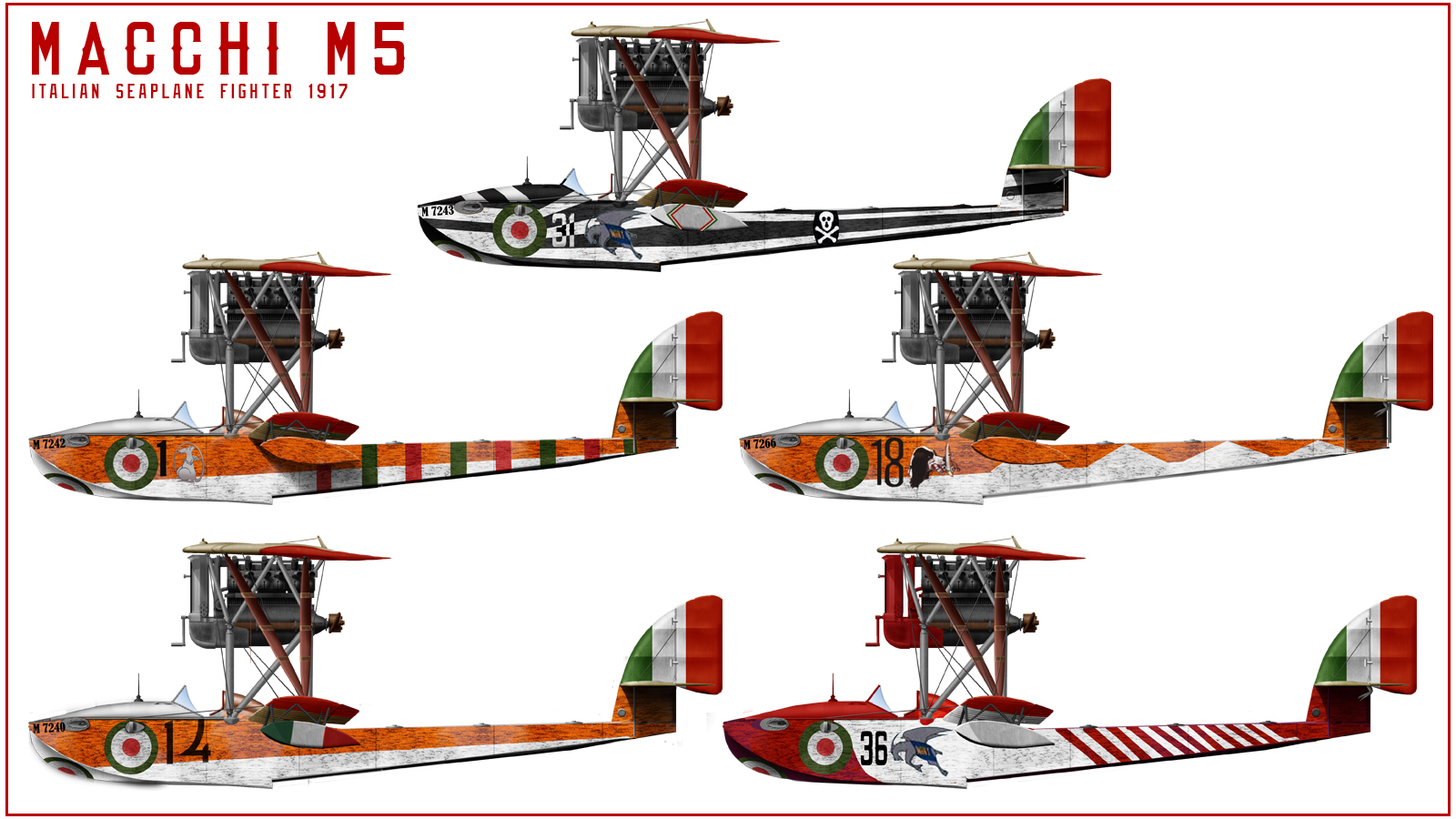
Macchi M5
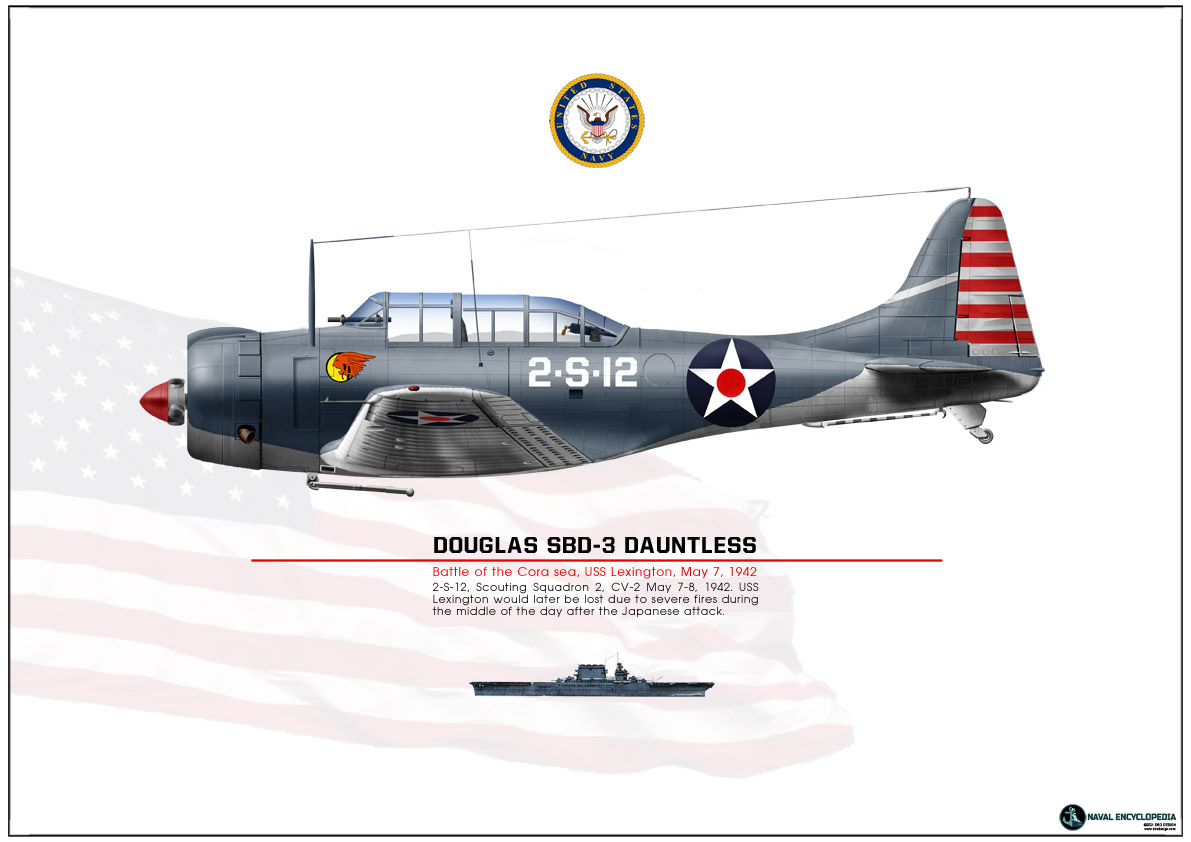
SBD Dauntless Coral Sea
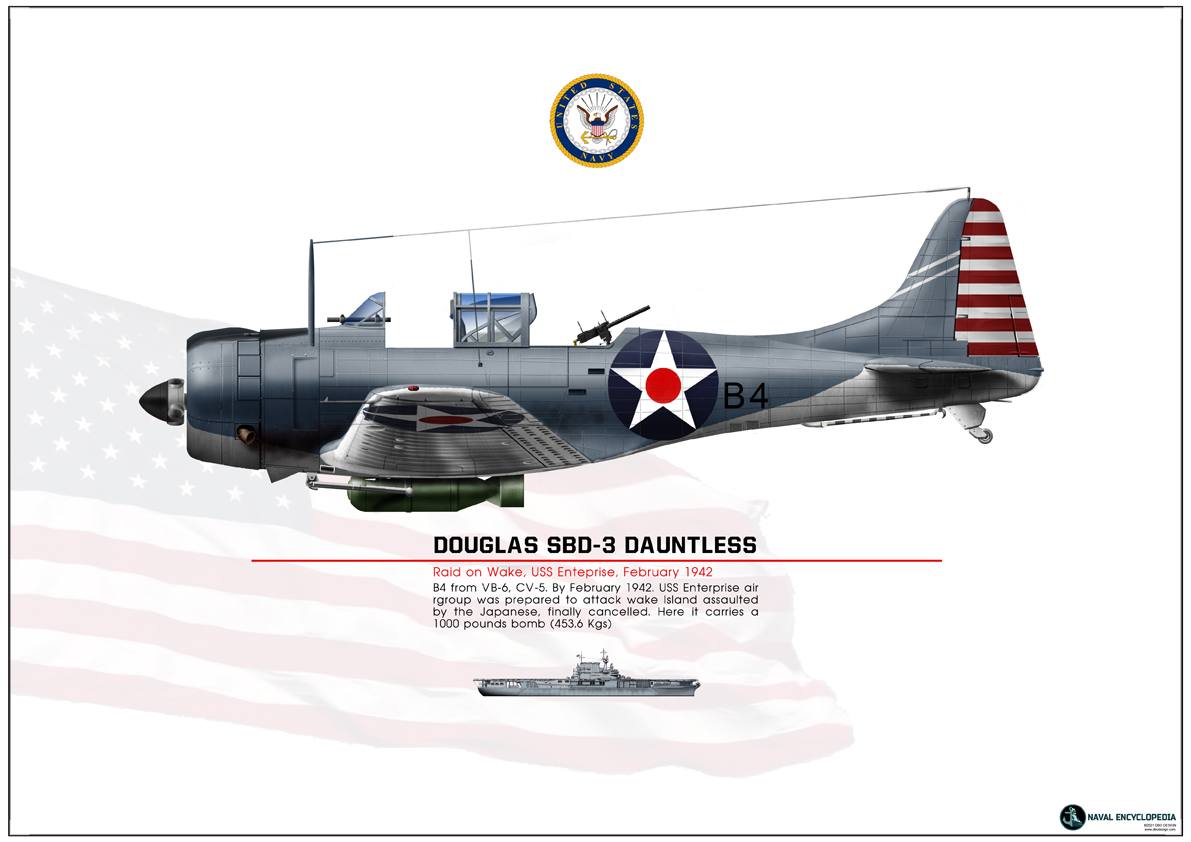
SBD Dauntless USS Enterprise
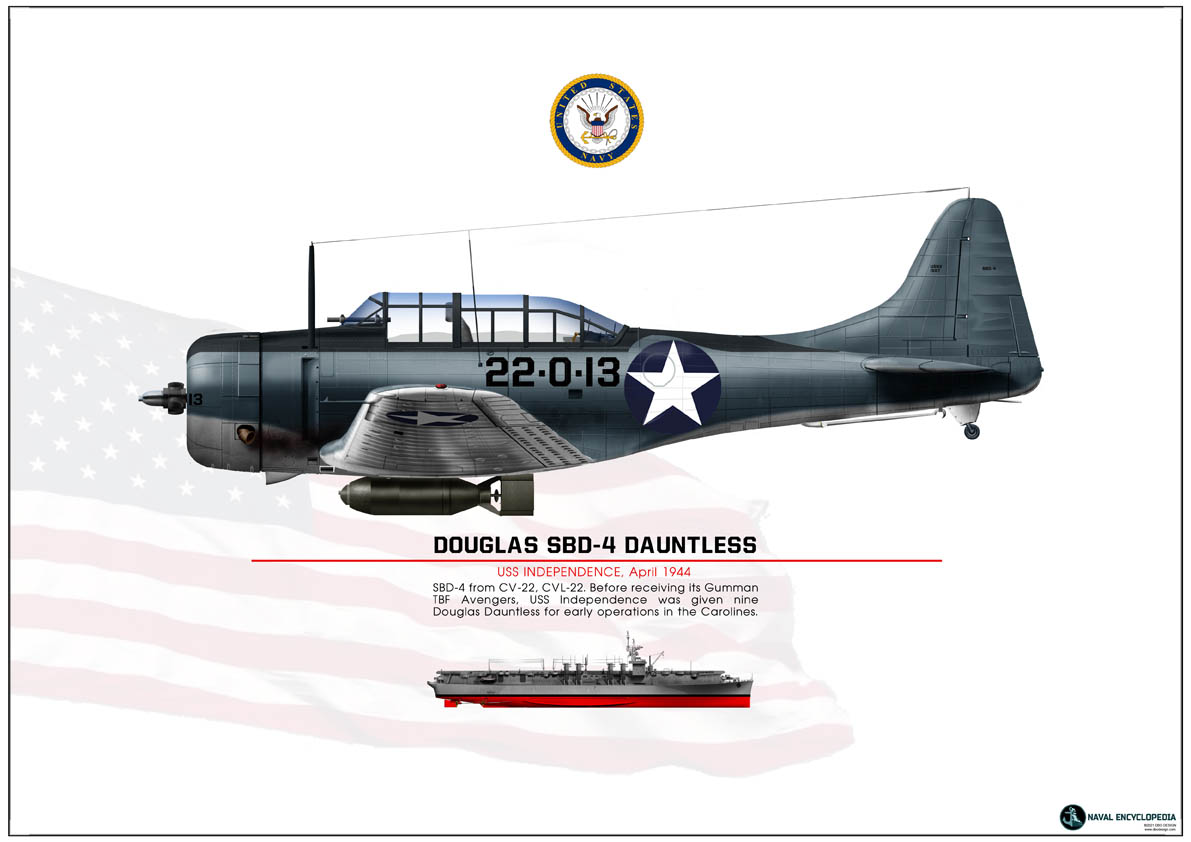
SBD-4 CV22